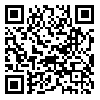Volume 13, Issue 3 (9 2000)
J Dent Med-tums 2000, 13(3): 74-80 |
Back to browse issues page
Download citation:
BibTeX | RIS | EndNote | Medlars | ProCite | Reference Manager | RefWorks
Send citation to:



BibTeX | RIS | EndNote | Medlars | ProCite | Reference Manager | RefWorks
Send citation to:
Ghalayani Isfahani P, Khorami B. Evaluation of serum immonogiobulins (A,G,M) and complement components (C3 d) in Isfahan dental clinics patients with recurrent aphlus stomatitis. J Dent Med-tums 2000; 13 (3) :74-80
URL: http://jdm.tums.ac.ir/article-1-515-en.html
URL: http://jdm.tums.ac.ir/article-1-515-en.html
Abstract: (8935 Views)
Recurrent aphtus stomatitis (RAS) is an oral mucous lesion in patients with no other signs of disease. Investigators have always notified the role of immune system especially humoral immunity in aphtus immunopathogenesis. The aim of this case-controlled study was to measure amount of serum immonogiobulins (A,G,M) and complement component (C3 C4) in patients with RAS and to evaluate any relation between differences in these factors and pathogenesis of RAS. Immonogiobulins (A,G,M) and complement components (C3 C4) of 50 patients with RAS was measured using single radial immuno diffusion technique. The results were compared with immonogiobulins (A,G,M) and complement components (C3 C4) of 50 healthy people whom were similar in age and sex with the patients group. Results showed that the patients group had higher level of IgA and IgM while serum IgG was similar in both groups. The C3 was lower in aphtus patients while no significant difference was found in amount of C4. The sex had no significant effect on serum level of measured factors. From the results it can be concluded that the humoral immunity reaction has an important role in immunopathogenesis of RAS. This humoral response might accurse as a result of cellular immunity reaction.
| Rights and Permissions | |
 |
This work is licensed under a Creative Commons Attribution-NonCommercial 4.0 International License. |




